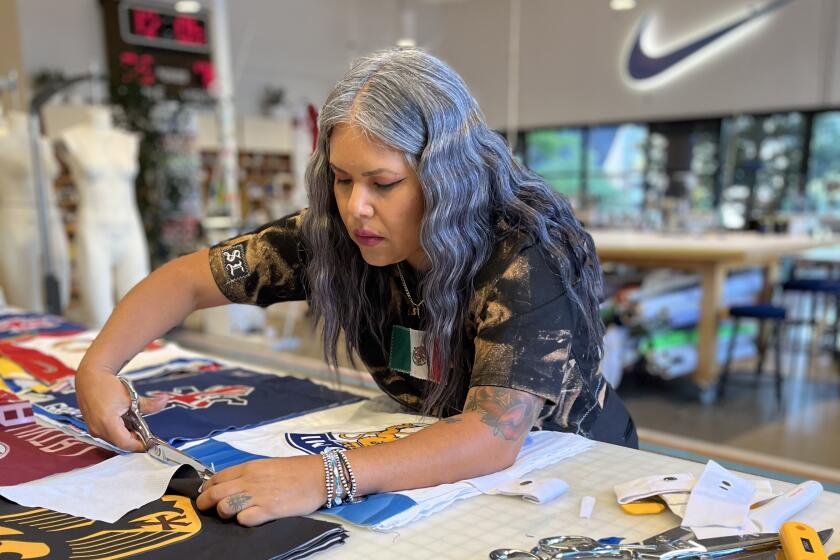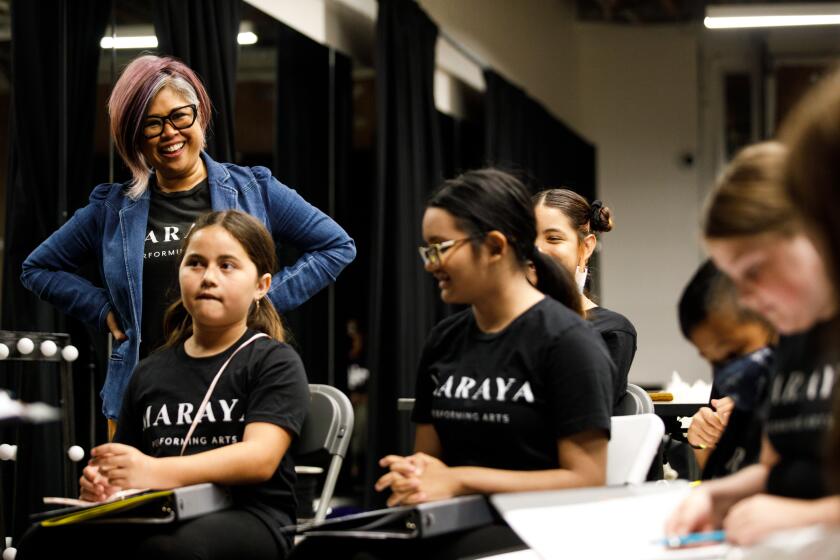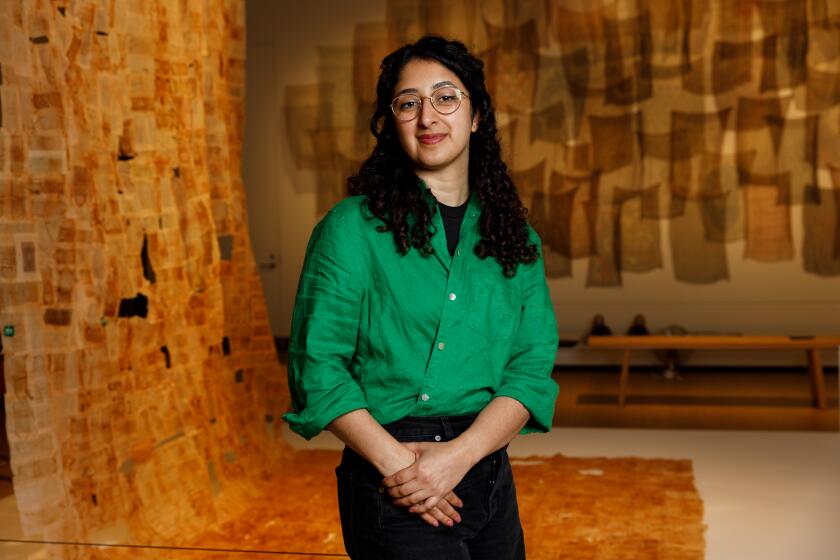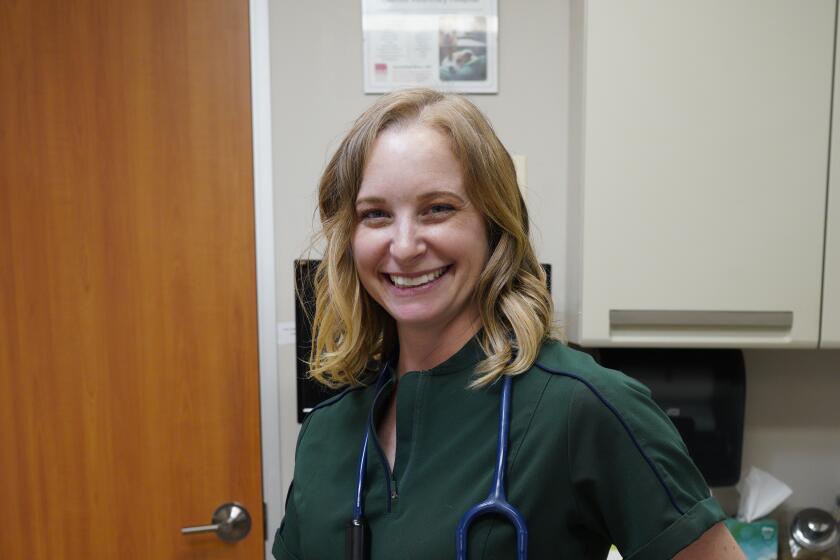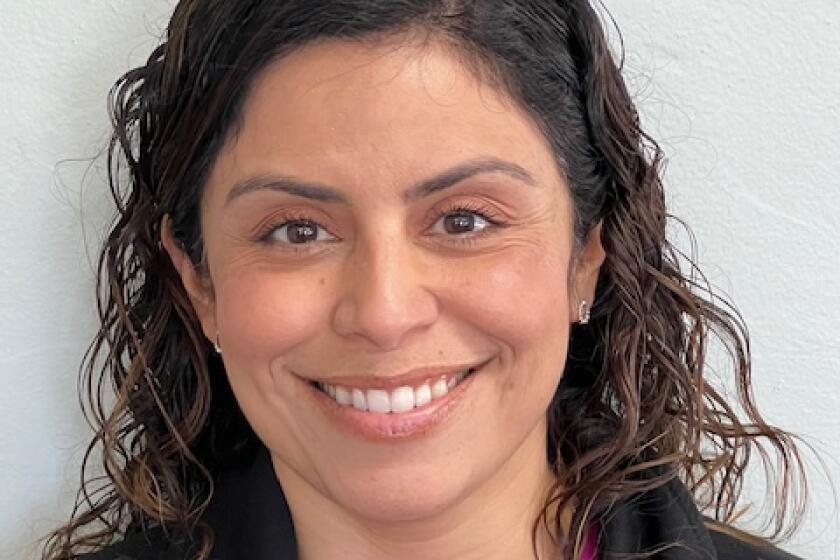For Lux Art Institute’s Andrew Utt, educating about art is priority No. 1
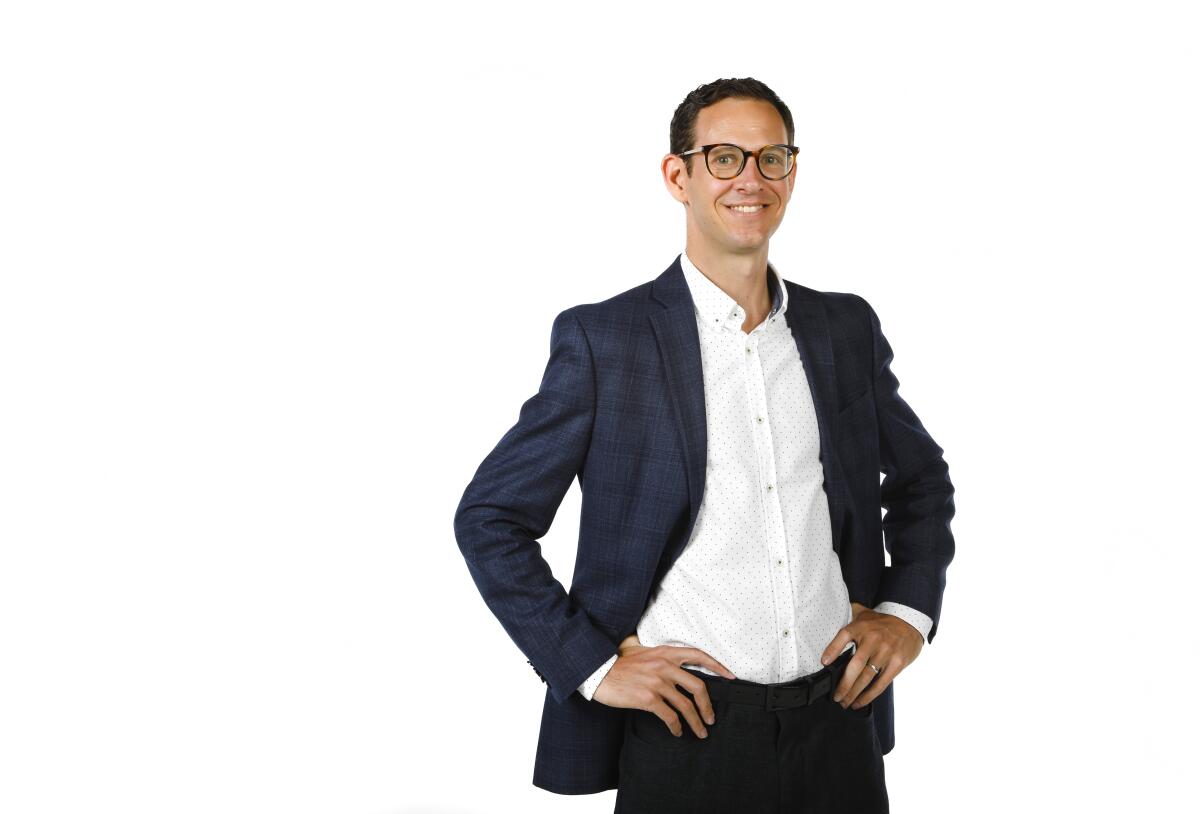
In his new role as executive director of the Encinitas institution, he hopes to demystify the art-making process and help people see art in a different light
Ask Andrew Utt if he grew up in a household that was particularly influenced by art, and he’ll be quick to respond with an affirmative answer.
“Absolutely,” he says. “My father is an architect, and my mother studied interior design (both at SDSU), eventually becoming a teacher at an arts elementary school in San Diego. My sister graduated with a degree in visual arts/photography at UC Santa Cruz, and both of my grandmothers were fashion designers. We had art on the walls growing up, and I went to an innumerable amount of museums across the country and the world by the time I was 18.”
It’s fitting then that the San Diego-born Utt, now 36, is the newly named executive director of Lux Arts Institute in Encinitas, where he hopes to make an impact by building bridges — between art and the community and between Lux and other San Diego institutions.
“Lux comes with a fantastic space and commitment towards the environment through its landscape,” Utt says. “I’m looking forward to unifying all of our spaces into one while connecting everything to the thematics drawn from the artist-in-residence.
“With this as a basis, we’ll be adding more artworks to our sculpture trail, building stronger partnerships with our San Diego neighbors, and planning our artists farther in advance,” adds Utt, who received his bachelor’s degree from California College of the Arts with a focus on wood/furniture, graphic design and visual studies, and a master’s degree in museum studies from Harvard University Extension School.
Utt, who lives in La Jolla with his wife and 6-year-old daughter, spoke to us about his new role at Lux, how he found his passion for art, and why educating the public about art is important.
Q: Your recent artist-in-residence season announcement showed a thematic shift in how you present your residency season. Talk about the impetus behind that.
A: The creative process includes not just the process of making, but the process of conceptualization. The concept(s) brought to the forefront guide our conversations about the work and how those concept(s) affect our daily lives. The focus on themes helps us drive consistency in our educational programming — classes that touch on those themes, lectures, presentations and performances, events and temporary art installations.
Q: This is not your first job with an art institution. Tell us more about how your past experiences have helped shape your current views and approaches to art.
A: Correct, I have been working in the arts since I was 18, but my last position was at a tech start-up here in San Diego. This experience was essential for bringing a corporate perspective to the arts — mixing the business side with the educational programming side has been an essential tool for building a sustainable future for this organization. However, every single experience I’ve had has led me to where I am now, whether it meant learning to hang an exhibition, organizing a library database, leading the accounting of a museum, grant writing, overseeing major international projects, or learning the function of a commercial gallery. I am blessed to have had over 15 years of experience in the arts and to be able to share that experience with the team at Lux.
What I love most about La Jolla ...
It’s located in a perfectly central location between downtown and Encinitas, which means I get the best of no traffic. I also live on the east side of the 5, allowing us easy access to UTC, shopping off Nobel, and close to the freeway entrance. It’s a mini-city here with all of the amenities within walking distance or a short drive. To top it all off, my daughter goes to school a few blocks from our home and my wife studies at UCSD — it works for the whole family!
Q: As a visual art administrator, what is your goal first and foremost?
A: Educate the public. Lux’s mission is focused on educating about the making process, and part of that is also the process of conceptual development. I’m excited to educate the public about making and thinking.
Q: Please tell us about the first moment when you realized your career would involve art.
A: When I was in undergrad, I used to volunteer at Southern Exposure in San Francisco. I was obsessed with what it meant to set up an exhibition, from the point of conceptualizing the exhibit all the way to producing and displaying it. I helped with the installations and the opening receptions for numerous exhibits there.
Q: These days, the arts tend to be where cuts tend to happen first. Are you doing anything, personally or through Lux, that’s a form of outreach to help ensure art remains an important part of San Diego’s cultural landscape?
A: Well, there are two questions here. First, what to do when the arts gets cut. This means fighting for the community. All leaders and stakeholders should recognize how this funding helps support the artistic opportunities that are made available through this funding.
Second, the best way to help ensure art remains part of San Diego’s cultural landscape is to educate people about what it means to have art in their lives. Institutions aren’t the ones responsible for maintaining funding — the people are because they are the ones benefiting. If institutions can educate their stakeholders about the significance of art in their lives, then we all become more powerful to convince the holders of the purse how necessary it is to continue to support our programs. We do that by offering classes to the community, whether that’s a making class or a thinking class.
Lastly, we are in Encinitas, which means we don’t receive funding from the San Diego Commission for Arts & Culture. We get minimal funding — though appreciated! — from our local arts commission and coastal community foundation, but ultimately, we need countywide support to get the funding necessary to reach more people.
Q: What’s the most rewarding part of what you do?
A: I get to work at a magical place with an amazing staff that care 100 percent about what they’re doing and gives their all to make it possible. After my staff, the community is so committed towards the arts and what we’re doing — it is inspiring on a daily basis.
Q: What’s the most challenging?
A: Achieving everything you want to do! There is never enough time or resources to make it all possible. Luckily, this team has the patience and the drive to keep working for their goal to educate the public.
Q: What is the best advice you’ve ever received?
A: Everything will get done eventually. Life is about prioritizing what matters most — family first.
Q: What was the most recent exhibit you’ve seen?
A: In the last week, I was traveling in São Paulo, so my highlights were seeing the Tarsila do Amaral show at the São Paulo Museum of Art, the William Forsythe show at the SESC Pompeia, and the Ivan Grilo show at the gallery Casa Triângulo. I also just saw the Tessie Salcido Whitmore show at Art Produce in North Park.
Q: What is the one thing people would be most surprised to hear about you?
A: After six-plus years living in Colombia, I love to dance salsa.
Q: Describe your ideal San Diego weekend.
A: Spending it with my wife and daughter and family friends. And hopefully visiting an art exhibition.
Q: Is there anything you’d like to add?
A: A couple of weeks after returning to San Diego, my wife said to me, “You know how lucky you are right? To have grown up in San Diego?” It’s true, it’s an amazing place to be and right now, it’s booming with ambition and new ideas. I’m not only lucky to have grown up here, I’m lucky to be here at this moment.
Get Essential San Diego, weekday mornings
Get top headlines from the Union-Tribune in your inbox weekday mornings, including top news, local, sports, business, entertainment and opinion.
You may occasionally receive promotional content from the San Diego Union-Tribune.




